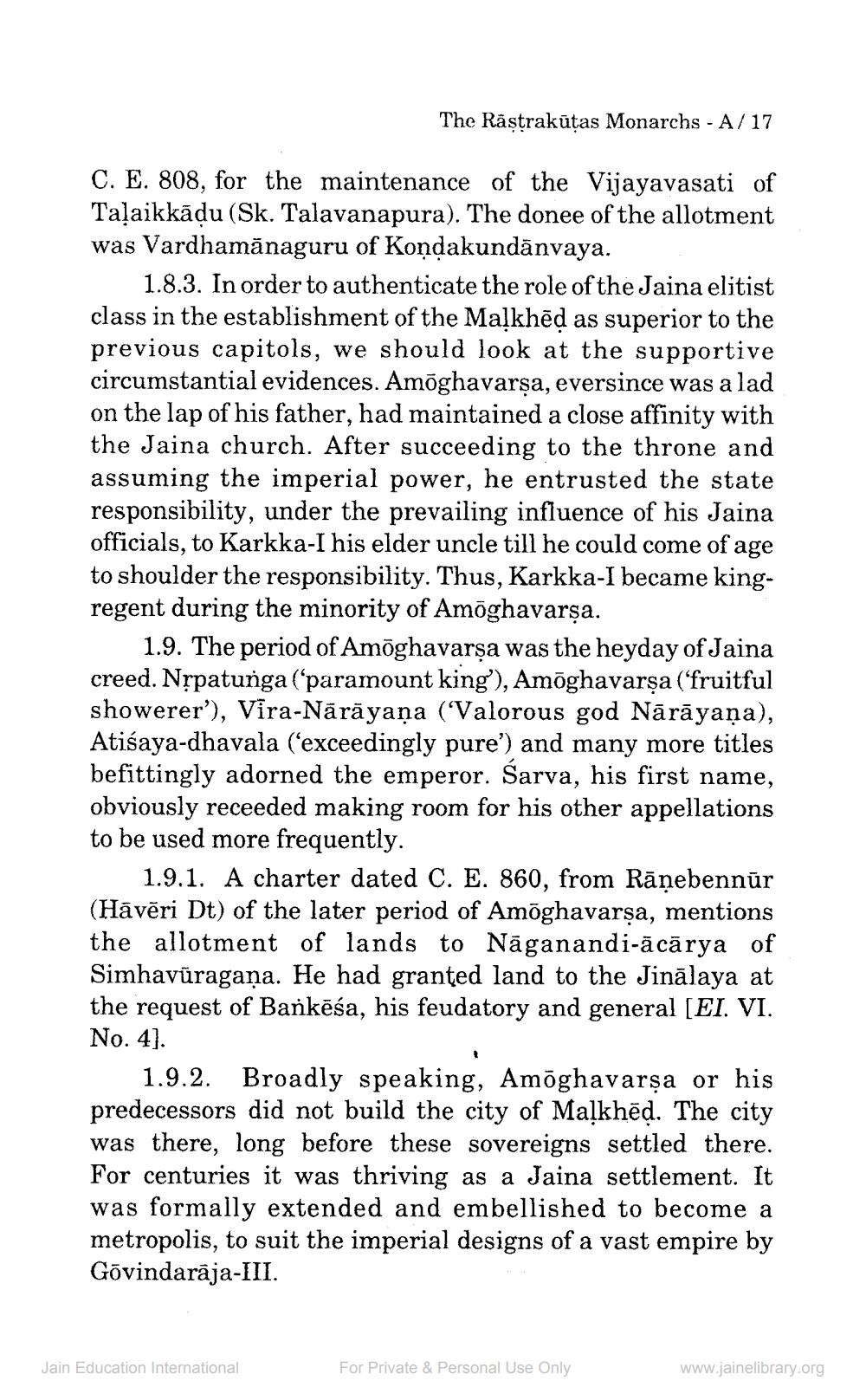________________
The Raṣṭrakūṭas Monarchs - A/17
C. E. 808, for the maintenance of the Vijayavasati of Talaikkaḍu (Sk. Talavanapura). The donee of the allotment was Vardhamanaguru of Kondakundanvaya.
1.8.3. In order to authenticate the role of the Jaina elitist class in the establishment of the Malkhed as superior to the previous capitols, we should look at the supportive circumstantial evidences. Amoghavarṣa, eversince was a lad on the lap of his father, had maintained a close affinity with the Jaina church. After succeeding to the throne and assuming the imperial power, he entrusted the state responsibility, under the prevailing influence of his Jaina officials, to Karkka-I his elder uncle till he could come of age to shoulder the responsibility. Thus, Karkka-I became kingregent during the minority of Amōghavarṣa.
1.9. The period of Amōghavarṣa was the heyday of Jaina creed. Nṛpatunga ('paramount king'), Amōghavarṣa ('fruitful showerer'), Vira-Nārāyaṇa (Valorous god Nārāyaṇa), Atiśaya-dhavala ('exceedingly pure') and many more titles befittingly adorned the emperor. Sarva, his first name, obviously receeded making room for his other appellations to be used more frequently.
1.9.1. A charter dated C. E. 860, from Ranebennur (Hāvēri Dt) of the later period of Amōghavarṣa, mentions the allotment of lands to Naganandi-ācārya of Simhavuragana. He had granted land to the Jinālaya at the request of Bankesa, his feudatory and general [EI. VI. No. 4].
1.9.2. Broadly speaking, Amōghavarṣa or his predecessors did not build the city of Malkhed. The city was there, long before these sovereigns settled there. For centuries it was thriving as a Jaina settlement. It was formally extended and embellished to become a metropolis, to suit the imperial designs of a vast empire by Govindaraja-III.
Jain Education International
For Private & Personal Use Only
www.jainelibrary.org




